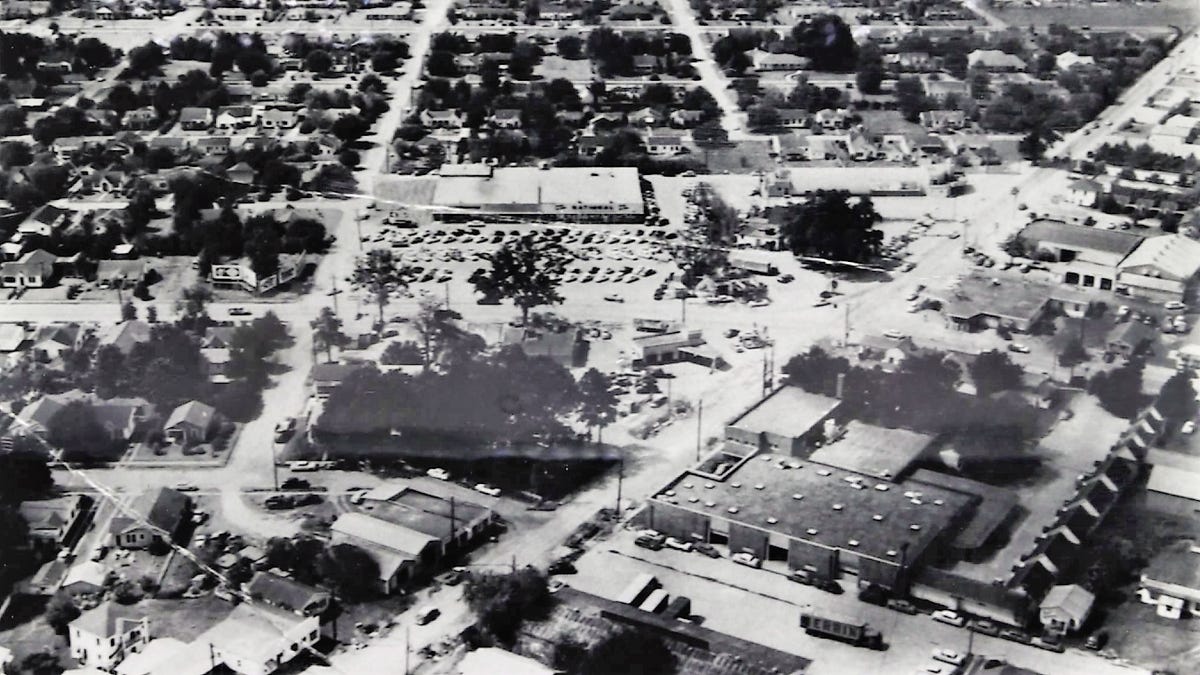LATEST FINANCIAL NEWS
How this city’s decades of racist housing policies left lasting scars and still define it
LAFAYETTE, La. — On either side of University Avenue, just outside downtown Lafayette, Louisiana, a decades-long history of racial segregation is laid bare.The once vibrant Four Corners, where University Avenue meets Cameron Street, stands at the division of some of the city’s earliest neighborhoods, separated by race, as a visualization of the decline of Lafayette’s predominantly Black northside.Bordered on one side by a wealthy, homogeneous white neighborhood steeped in historic racial discrimination and on the other by a left-behind Black neighborhood, Lafayette’s Four Corners marks the dividing line of the city’s racist past that remains as clear now as when it was at its most ingrained. Lafayette’s white and Black residents have long been separated in most parts of the city. Decades of racist policies codified residential segregation that concentrated 70% of the city’s current Black residents into just 25% of its land area, which led to decades more of lop-sided economic decline.Opinion: Reparations is not about cutting a check. It’s about repairing a community.Flush with cash: Affluent Americans are chasing million dollar listings”We can’t look at the status of Lafayette’s segregated populations in a vacuum; we have to accept the facts of history,” said Bishop John Milton, a longtime attorney and leader of Lafayette’s Black Catholic Imani Temple. “America’s original sin of slavery and racism is the reason why we’re still in the condition today.”Lasting legacy of lawOne of Lafayette’s most enduring segregation policies was a 1923 city ordinance that restricted Black residents to a pair of Black-only areas that combined to account for less than half a square mile of land, claiming the rest of the city solely for white residents and imposing a fine of $50 a day – $775 in 2021, adjusted for inflation – for people who moved into or started businesses in areas designated for a different race than their own. Just a year before, Lafayette’s monument to Confederate Gen. Alfred Mouton had been erected downtown during a phase of the Jim Crow era that saw monuments to white supremacy installed across the South as a way to intimidate Black residents.Racist zoning ordinances were ruled unconstitutional years before Lafayette’s was imposed, and the city’s Board of Trustees quickly repealed it after complaints from white citizens whose homes had been included in the Black-only zones, but the message the racist zoning law sent was unequivocally clear. “It was like they flew a flag up and said, ‘OK, we can’t enforce this, but guess what, this is what the expectations are from everyone going forward,’” said Prof. Rick Swanson, who chairs the University of Louisiana at Lafayette’s Department of Political Science.Story continues below.One of those zones followed the St. John Coulee just east of University Avenue, carving out Lafayette’s La Place neighborhood as a Black-only zone along the then-city limits and leaving a stark racial divide that exists to this day between La Place and the nearby West End Heights and Oaklawn neighborhoods. As the city expanded in the 1920s and 1930s, Lafayette’s growing neighborhoods embraced another nationally widespread practice that cut Black residents out of the city’s growth through racially restrictive covenants that prohibited Black people from living in then-new parts, like the Oaklawn subdivision.”The use of this subdivision and that part of the West End Heights Subdivision herein included is to be restricted exclusively for the residential purposes by people of the white race,” a 1938 covenant signed by Oaklawn residents reads. “None of the lots herein involved shall ever be sold to a person of any other race.”Oaklawn wasn’t alone in formally barring Black residents from its streets. More: White supremacist propaganda hit an all-time high in 2020, new report saysThe neighboring Comeaux Place subdivision followed suit in 1939, as did the St. Germain and Les Jardin subdivisions plus Southwestern Villa and the Central Park Addition, which remain on local property records despite becoming unconstitutional in 1948. Even the land for S.J. Montgomery Elementary School, behind Lafayette High School, was given under a similar racially restrictive condition by Montgomery’s family in 1954 that required the school be built “for the white race only.”At least one Lafayette neighborhood, the Alpha-Cotter Addition, advertised its homes as “whites only.””The racial patterns we have in the city today are a direct result of the intent of not just (the law in) 1923, but it would have been forced all the way up through the restrictive covenants in the 1940s,” Swanson said. Those racist policies codified the city’s segregation for decades to come, leaving Black residents in older homes with less value as the city’s wealthy and white population expanded south away from the northside. Lafayette’s racial wealth gapDecades of racist housing policies left lasting scars in Lafayette that have perpetuated the city’s residential segregation and lingering racial wealth gap. Neighborhoods in North Lafayette have dramatically lower median household incomes and home values than the city’s white areas, according to data from the U.S. Census Bureau. “There’s a tremendous wealth gap between Black and white citizens of Lafayette Parish, and especially North Lafayette and South Lafayette,” said Greg Davis, a longtime Lafayette community leader. “And the wealth gap has a historical basis. You’ve got to take the history into account in order to understand how we have arrived at this point in 2021 where there’s such a gap in wealth.”Story continues below.That wealth gap stems from far before the city’s racist housing policies back to the days of slavery. Though laws have progressed, systemic inequalities have persisted even in the decades following the civil rights movement of the 1960s. “For about 100 years, we lived under Jim Crow coming out of slavery, so you couldn’t get loans to go and build a house because you were being redlined by the banking industry, by the real estate industry. You didn’t have great job opportunities because of Jim Crow segregation. And so for another 100 years, the ability to generate wealth was undermined further.”Davis, who was a student at Paul Breaux High School in Lafayette when it was closed in an effort to integrate the parish school system in 1971, said the push to desegregate public schools in Lafayette worsened the city’s residential segregation as white families left Lafayette’s northside to avoid integrated schools, leaving the city’s Black residents behind.As the city’s neighborhoods became more segregated, conceptions of Lafayette’s northside worsened, intensifying the white flight that ultimately left the stark racial divisions that currently define the city’s Black and white neighborhoods. “I’ve got professionals who move into Lafayette, and those who bring them in will say to them, ‘Don’t go past University Avenue’ from the southside,” Milton said.”Of course, the implication is something bad’s gonna happen if you go across that University Avenue line.”The impacts of that division are numerous, from the city’s racial wealth gap to educational attainment and economic opportunity, and addressing those issues that have been perpetuated and intensified by Lafayette’s decades of segregation will first require a reckoning with the city’s racist past, Milton said.”Unless there is a true reckoning with the impact of slavery, segregation, Jim Crow and all of their progeny that lets you have a true reckoning with that and its impact,” Milton said, “then we’ll never be able to live in the land that Dr. (Martin Luther) King dreamed of where his little children can one day live in a nation where they will not be judged by the color of their skin but by the content of their character.”Editor’s note: During May, the staff of The Daily Advertiser, will bring you a series of articles that look at Lafayette and Acadiana’s past focused on segregation and racial inequities. We’ll give you an honest, fair and often uncomfortable view where we as a community have been and where we are today. Our hope is that in those uncomfortable moments we’ll find solutions and resolve to take concrete actions that will unite our community.Follow Andrew Capps on Twitter or send an email to acapps@theadvertiser.com.
Source link









